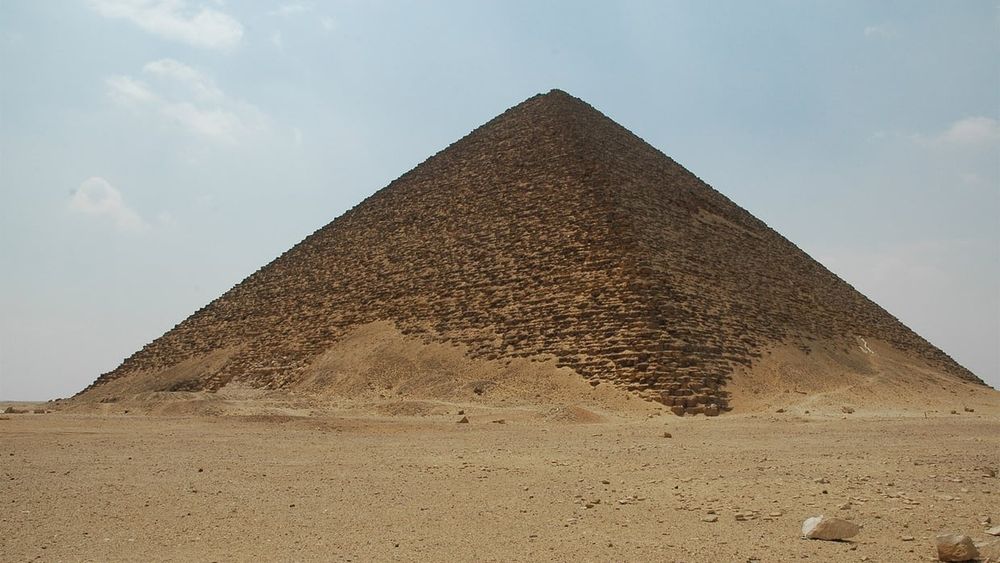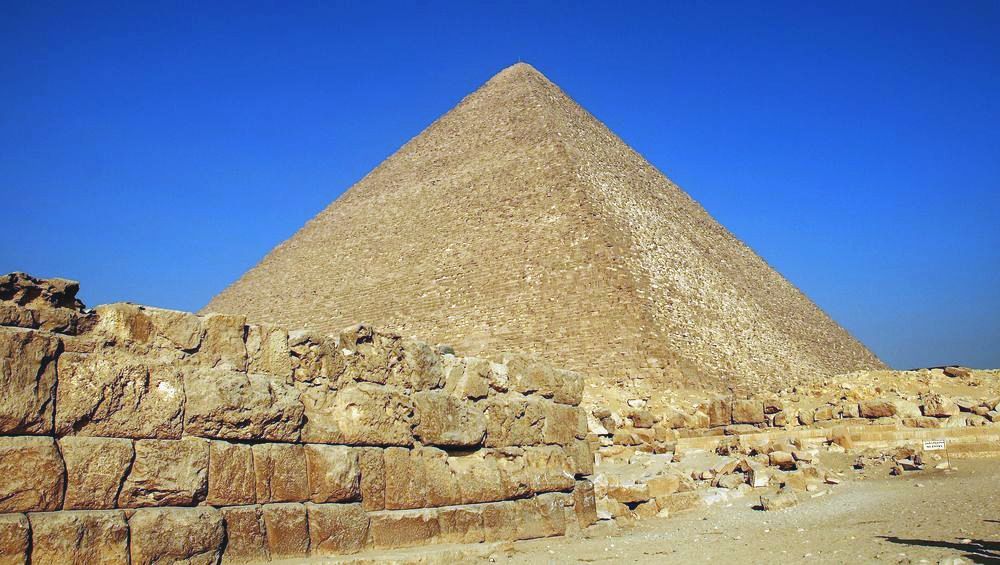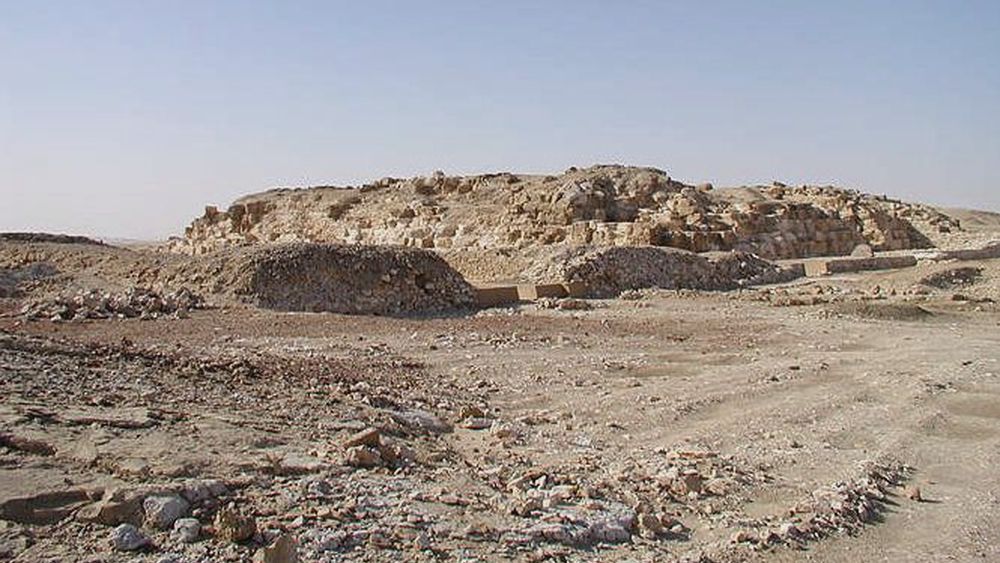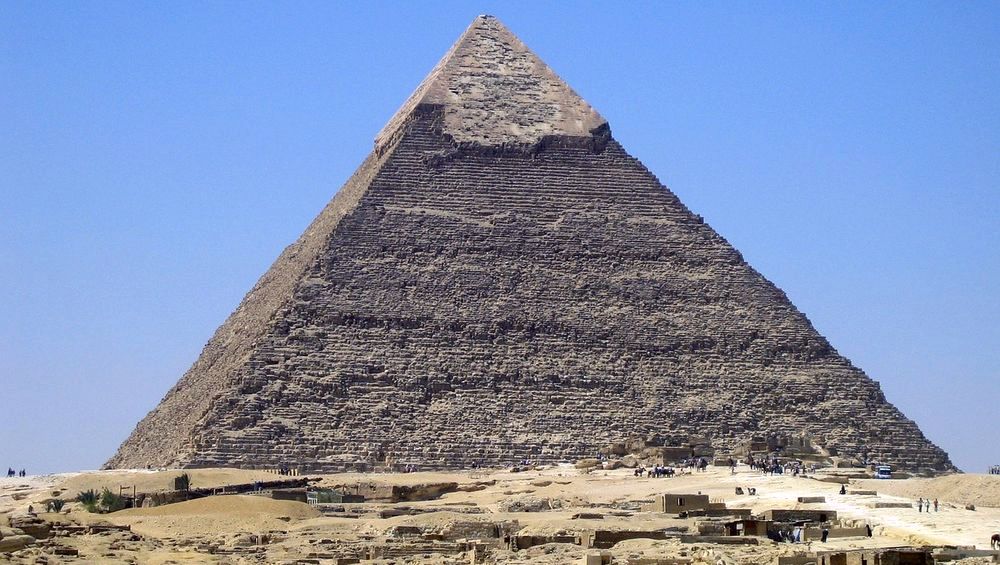Of all the pyramids in Egypt, three of them stand out by their unusual sizes. This is the red pyramid, the pyramid of Khufu and the pyramid of Khafra. If we add the unfinished pyramid of Baka and the more modest pyramid of Djedéfrê (an anomaly in this list), we have a historical coherence by the fact that all these pharaohs succeeded one another, Snefrou who built the red pyramid in Baka, last pharaoh to have tried to make a giant pyramid.
This long phase in the history of the pyramids takes place after failed attempts to build smooth-faced pyramids, and before the normalization period that followed the giants.
The apogee of the old empire
We are in ancient Egypt, at the beginning of the IVth Dynasty. The first pharaoh of this new dynasty, Snefru inherited a stable empire with well-established borders. The territorial conquests of the Third Dynasty ensured a recurrent supply of metals and stones, and the stability of the empire allowed the population to live in a comfort that did not exist until now. Peace as well as the extension of religion contributed to the improvement of daily life on the banks of the Nile.
During the Third Dynasty the royal architects had established a number of rules to achieve smooth-faced pyramids after designing step pyramids. The two failed attempts, the Meidum pyramids and the rhomboidal pyramid, had allowed Snefrou to understand the errors so as not to reproduce them. Thus he threw himself into the construction of a third pyramid, it is the one that we call today the red pyramid.
The giant pyramids
The red pyramid
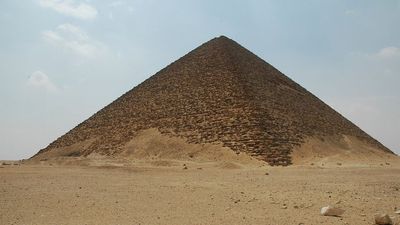
The red pyramid, from Snéfrou
Third pyramid by its size, the red pyramid is best known for being the first smooth-faced pyramid in the history of the Egyptian pyramids. It was Pharaoh Snefru who built it after having twice tried to build one.
It is a sacred monument, with an initial height of 109m and a half for a square base of 219m. Its inclination is weak, a little over 43 °, it gives it a rather flattened compared to those of his successors. Its entrance is 28m high on its north face, it leads to a long downhill corridor (61m long) which ends in an antechamber, then, just behind, the burial chamber. They both have a corbelled vault on two sides. If the system of internal galleries is reduced to what is simplest, the decoration is also, since there is absolutely no decoration inside the red pyramid. The sets will arrive decades later.
The red pyramid is, as always, an element of a larger funerary complex. It consists of a simple temple high attached to the east face and a wall that protects everything. And that's all ! This is one of the simplest complexes that has existed, since usually, and especially later, the funeral complexes will be endowed with many ancillary buildings.
Its red color comes from the quarry where the blocks came out, a local quarry, to avoid transport. But it is a recent name, since at its construction it was entirely covered with a white limestone facing, like the others.
The pyramid of Khufu
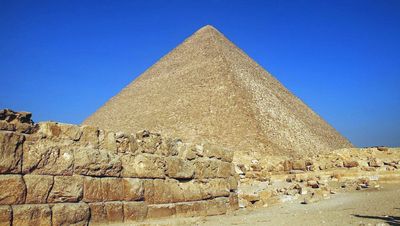
The pyramid of Khufu
The pyramid of Khufu is undoubtedly the best known of all the pyramids of Egypt. The fact that it is the highest gives it its celebrity, but we must also take into account its extraordinary finish that makes it a masterpiece of the architectural art of the time.
We are at the Fourth Dynasty. Khufu is the son of Snefru, he chose the site of Giza to build his tomb, unlike his ancestors who were rather Saqqara. Admittedly, Giza was already a known necropolis, there were many tombs there, and some date back to the 1st Dynasty, so the necropolis was very old, but it was not yet a royal necropolis. We do not know why Khufu made this choice, but he was bold at the time.
The Khufu pyramid measures 146m high for a 230m base. Not only is it a gigantic building, but it is above all a complete funeral complex, consisting of the pyramid, a high temple, satellite pyramids, a long wall, and from this wall, a causeway to a low temple, against which stood a wharf. For this is an originality that is difficult to imagine nowadays, but an arm of the Nile advanced to the feet of the plateau, making it possible to arrive at the burial boat. In fact, some of these boats have been found almost intact in pits near the pyramid.
There is a lot to say about the pyramid of Khufu, but the best is to see the link below, which perfectly describes this monument.
Learn more about the pyramid of Khufu.
The pyramid of Djedéfrê
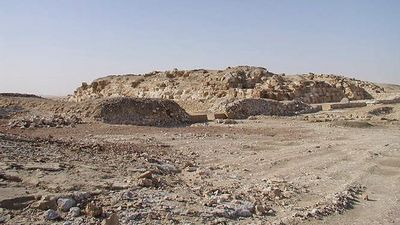
The pyramid of Djedéfrê
A real anomaly in the giant pyramids, the pyramid of Djedefrê is not dimensioned to fit into this category, but as it is temporally included in this period, it is generally accepted as a giant pyramid.
From a height of 67m for a square base of 106, it has a size almost identical to the famous step pyramid of Djoser. She was raised at the necropolis of Abu Rawash, a site on which she is the only royal tomb. Obviously at that time it was common to choose a grave in a place different from that of his father.
Nowadays, the pyramid of Djedefrê is strongly degraded. From a distance, it can be distinguished from the surrounding hills and you have to get close to see the heavy limestone blocks that were used for its base to understand that we are there on an ambitious construction project. In fact, this destruction is not natural: The pyramid served as a stone quarry.
The pyramid of Khafra
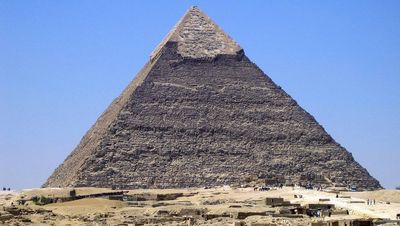
The pyramid of Khafra
Second pyramid of Egypt by size, the pyramid of Pharaoh Khafra is in Giza, like that of his grandfather. Khafra chooses to be buried next to his grandfather, going as far as to orient his pyramid in the same way. We are still during the IVth Dynasty.
Here too, this pyramid is accurately described in a dedicated page, see the link below to read its description.
Learn more about the pyramid of Khafra.
The pyramid of Baka
We know very little about the unfinished pyramid of Baka. It is located in Zaouiet el-Aryan, a site north of Abousir, 7Kms South of Giza. On this site, only two pyramids were built, one during the Third Dynasty, the other at the end of the IVth, it is the one that interests us here.
Of this pyramid, nothing remains, simply because it was never built. The work was started but immediately stopped, which allows us to see a great excavation and the beginnings of the assembly of the first rows of blocks. The excavation is 110m by 8.5m and is 21m deep. The site shows that the pyramid should have had a base of 210m side, which would have given a size close to that of Khufu. Little curiosity, she has no burial chamber buried at the end of a long corridor, as is always the case, but the burial chamber is at the bottom of a 25m well, as in the mastabas. It contains an oval sarcophagus, which is a unique case in Egyptian history.
The end of the giant pyramids
When Mykérinos ascended the throne of Egypt, he also built a pyramid and chose Giza as a necropolis. However the structure of the soil and the chosen location does not allow him to build a pyramid as large as those of these predecessors, so he decided to build a more modest (66m high, anyway). Of course, there is probably another reason for the geological reason to justify a lowering of the size of the funerary monuments from that time, and perhaps the great time needed to build a funerary complex was becoming great that the sovereign might die before the completion of the works. This is what happened to him, since Menkaure never saw his pyramid finished, having died before. Moreover, the work was stopped immediately.
Whatever the reason, we note that from Menkaure the pyramids are smaller in size and have new features that usher in a new phase of the history of the pyramids: The golden age of the pyramids.
See also:
The differents phases of the pyramids






